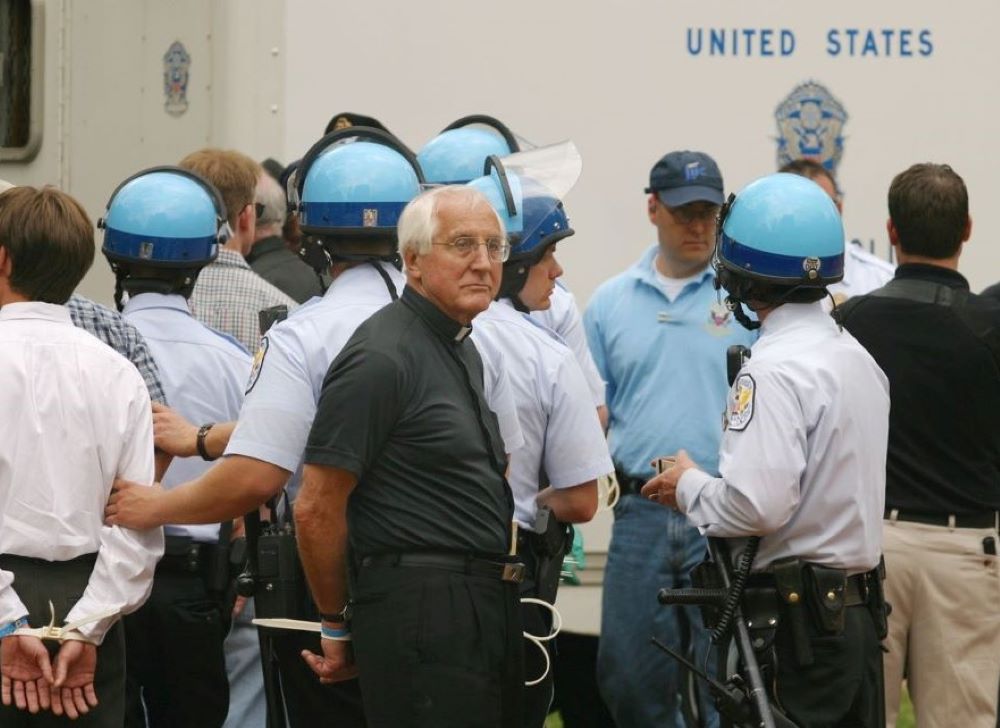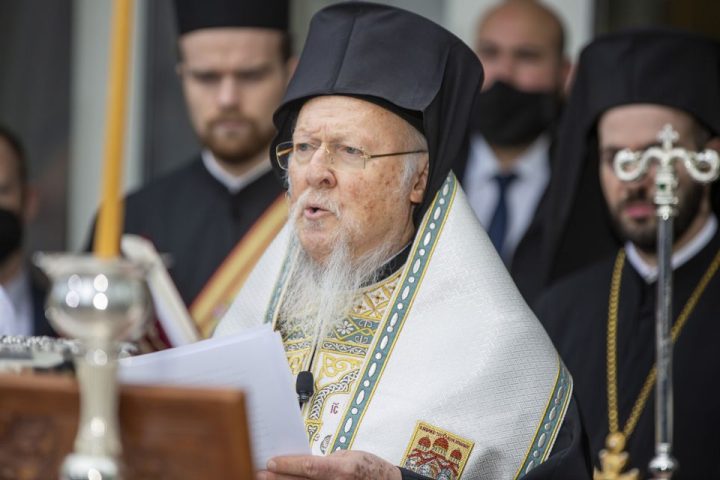
« I can’t do this. »
It was a wail from the bowels of the Archdiocese of Detroit chancery office by a promising young priest, tasked with framing the agonies of failed marriages into bloodless canonese so that couples might please the powers in Rome to grant their annulment. It was a necessary penance and rite of passage for the clerically upward bound, chosen ones already by virtue of this assignment, some fantasizing about that oh-so-tall bishop’s miter that could someday be theirs — when it would be received, of course, « in all humility. »
For Fr. Thomas Gumbleton, it was 1960 and priests simply and unquestionably did what the archbishop bid them do. Better known to his seminary classmates as scrappy, hard-charging « Gump » — a guy who could take it as well as he could dish it out in hockey, football or even handball — he certainly was not a hierarchical climber. He loved the messiness and majesty of parish work and expected he would live out his ordained years as a pastor. No one was more surprised than Gumbleton himself as he opened still another piece of mail from a Vatican curial office in 1968. Pope Paul VI was asking him to be consecrated as bishop. At 38, he would be the youngest in America.
It was a letter a future pope would hope had never been written.
No Guilty Bystander: The Extraordinary Life of Bishop Thomas Gumbleton
Frank Fromherz and Suzanne Sattler
336 pages; Orbis
$30.00
At a time when we look across the brotherhood of American bishops and all too often see (check out your sanitized diocesan publication, if you still have one) a coterie of benevolently smiling prelates, miters soaring and crozier (one company offers « shepherding with style ») stoutly gripped, anointing confirmands or dedicating a new parish, Gumbleton would prove to be of quite different mettle. This is a bishop whose face frequently appeared in the press and on television, a maverick who would range far from his home diocese, taking on not only controversial national issues, but the world’s agonies as well.
No Guilty Bystander adroitly and dramatically traces Gumbleton’s remarkable life, a veritable parallel history of the events that have confronted our consciences since the 1960s. To get a template of his approach, I dusted off a description of Catholic Action, a 20th century movement that united ordinary lay people, union and social activists and — a big « and » here — members of the Catholic hierarchy in confronting social ills. The movement encouraged this process:
First, one reviews the concrete situation; secondly, one forms a judgment on it in the light of these same principles; thirdly, one decides what in the circumstances can and should be done to implement these principles. These are the three stages that are usually expressed in the three terms: observe, judge, act.
Gumbleton’s activism took root in early protest to the Vietnam War, when he pushed a reluctant National Conference of Catholic Bishops (the group became the U.S. Conference of Catholic Bishops in 2001) to draft stronger statements against the war. He would eventually move to urge the group to ban nuclear weapons. But his were no armchair protests. He was arrested, shackled and jailed numerous times.
Gumbleton traveled to both South and North Vietnam to see both sides of the conflict, repeatedly marched for civil rights, fasted and protested at nuclear bomb sites and at the infamous School of the Americas, which trained South American death squads. All this while serving in various archdiocesan posts and overseeing an active parish.
El Salvador, Nicaragua, Guatemala, Palestine, Israel, Haiti, Afghanistan, Iraq, Iran, the U.S.-Mexico border; Gumbleton wanted to see the agony and feel the pain of the oppressed. His many trips saw him questioning top officials as well as the people affected; meanwhile being, well, a good priest. Photos show him with a malnourished Haitian baby in his arms, sitting with Afghan children whose limbs were blown off by bombs, listening to survivors of a Salvadoran village whose friends had been incinerated by American-made explosives.
His presence as an American bishop made its own statement; and then his protests, articles for various publications, many talks and personal involvement pursued impassioned yet reasoned views. Organizations including the United Farm Workers, United Auto Workers, Bread for the World and Pax Christi USA all enjoyed his support. He claimed his actions were no more than implementation of church documents and the words of Scripture.
To those members of the hierarchy who saw their work more linearly defined, you might imagine that Gumbleton was a continuing stabbing pain in the ecclesial gluteus maximus of the bishops’ conference. And to Rome.
With the election of a new pope in 1978 the desired qualifications for bishop appointments radically switched from Paul VI’s pastoral to John Paul II’s doctrinal. After 10 years as an auxiliary, this would normally be the time Gumbleton would be assigned his own diocese. That letter from Rome never came, and it was clear it never would under John Paul II.
For Gumbleton, it probably was a blessing. Although he served as vicar general, vicar for priests and other top positions in Detroit, his social activism kept propelling him to range far beyond the diocese.
His allegiance with New Ways Ministry, which advocates for equity and inclusion of LGBTQ+ people in the church, was symptomatic of Gumbleton’s modus operando. His own brother came out as gay, and Gumbleton entered his world to hear of the torment he suffered. As he would do from the killing fields of Vietnam to the slums of Haiti, he took that pain as his own and pressed on. He rarely wore the bishop’s miter, but eventually used it to make a statement: adorned with a cross, a pink triangle and a rainbow ribbon.
Today, Gumbleton, at 93, lives in a sparse 400-square-foot apartment in Detroit. He had hoped to live out his days in some role at St. Leo’s, where he was beloved. But that was not to be, for there was to be a final church denouement, a coup de grâce, which, had this been a movie, could almost have been predicted.
In 2006 when Gumbleton gave written testimony in Ohio urging the state to extend the statute of limitations for victims to file lawsuits over sexual abuse, it was the final example of his poor sportsmanship in the boys’ club of the priesthood. In his testimony, Gumbleton wrote:
I am persuaded that this is the most effective way to make all those responsible, bishops who protected priest-perpetrators as well as priests themselves, truly accountable for this tragedy and to deter similar recklessness or wrong-doing in the future, by any decision-makers, inside or outside the church.
Advertisement
Prelate omerta had been violated. Neatly citing canon law, Pope John Paul II’s Vatican called this a violation of communio episcoporum (the communion of bishops). How dare a bishop of Detroit cross the Ohio state line to stand up for victims? Even one who, as a 15-year-old high school seminarian, had been groped by a seminary priest?
A week after his testimony, Detroit’s Archbishop Adam Maida asked Gumbleton to resign as bishop and pastor. The Vatican made it clear he was not to serve in any role, even parish administrator, and he was eventually ordered to leave St. Leo. A few years later St. Leo was closed after being collapsed into another parish.
No Guilty Bystander presents ample evidence; now we’ll have to come to a decision on Gumbleton’s tumultuous life. Will it be, « Well done, good and faithful servant, » or « Gump, you just kept on hitting ’em too hard »?



